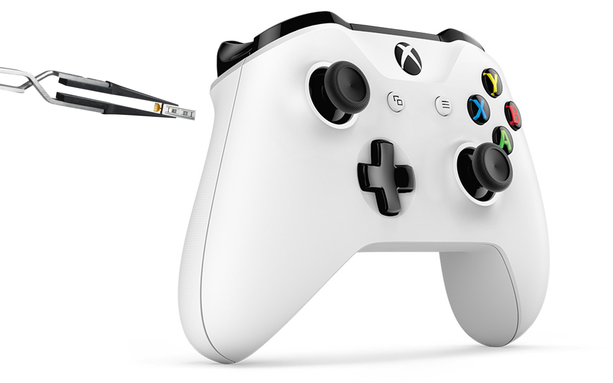10 Nov 2023
Feel the change: SMA's role in advanced haptic solutions
By Geoff Farmer, Head of New Products
With a connected world enhanced by interactive technology, the tactile response of our devices plays a significant role in shaping user experience. At this intersection of touch and technology, Shape Memory Alloy (SMA) actuators are setting new standards with Cambridge Mechatronics standing out as a pioneer. Here we look into SMA's impact on the haptic industry.
The need for haptic actuators
As users increasingly interact with virtual environments, buttons and touchscreens, the tactile dimension of these interactions becomes essential for a fully immersive and intuitive experience. Haptics, especially advancements like SMA actuators, bridge this sensory gap, enabling devices to simulate genuine touch sensations. Whether it's the tactile feedback from a virtual button on a smartphone or the tangible sensation of interacting with a virtual object in a VR or XR environment, haptic technology enriches digital interactions, making them more lifelike and responsive. In essence, as digital interactions become an ever-growing part of our daily lives, haptics emerge as a crucial element for enhancing user experience.
Overview of haptic actuator technologies
- Voice coil motor (VCM): Comprising rotating mass and linear resonant actuators, VCMs are commonly found in gaming consoles. Their mechanism relies on shaking large parts of the device, making localised sensations challenging due to their inherent design and size. Their reliance on rotating inertia or resonance constrains the type and quality of sensation they can generate.
- Piezo: Piezos offer varied displacements, either large with low force or small with high force. While offering unique features, Piezos come with challenges including integration difficulties, brittleness, lead content, and high voltage requirements.
- Shape memory alloy: These actuators stand apart, leveraging the rapid contraction of SMA when heated. From delivering sharp clicks to high-frequency buzzes, the compact and robust design delivers durability and versatility, even in challenging environments.
SMA haptic actuators: a closer examination
The core mechanism involves a crystal structure phase change in SMA wire when heated, leading to contraction. This high-force-to-mass contraction enables haptic applications, especially when high loads, like human fingertips, are involved. Given the minimal footprint of SMA actuators and their resilience to mechanical stresses, they promise durability and are especially suited for space-constrained devices. The advantages provided by SMA actuators include:
Versatility in Sensation
SMA haptic actuators have the capability to produce a wide range of tactile sensations. They can produce very sharp clicks that genuinely feel like button presses, a characteristic desired in many applications. Beyond the discrete sensations like clicks and crunches, SMA can also be used for more subtle sensations that can even mimic the texture of a surface.
Compactness
One of the standout features of SMA actuators is their compact nature. Their small footprint, often dimensions of just a few millimetres, makes them ideal for integration into space-constrained devices, from mobile phones to gaming consoles and VR headsets. This allows manufacturers to embed haptic feedback in devices without significant redesign or enlargement.

Robustness and Durability
SMAs are particularly robust. Unlike Piezos which can be brittle, SMA actuators can withstand various forms of physical stress. Their resilience to shocks, drops, and regular wear and tear ensures longevity, a critical requirement in today's fast-paced consumer electronics market.
Effective Power Consumption
SMA actuators only require a burst of energy for a short duration to generate the desired tactile response. This efficient power usage ensures that devices using SMA actuators don't suffer from rapid battery drains.
Superior Localized Feedback
SMA's ability to provide varied, adjustable and localized sensations sets it apart. Instead of shaking or vibrating an entire device, SMA can target a very specific part of a device, like a particular button. This not only enhances the user experience but also opens the door for multi-point haptic feedback within a single device.
Integration Simplicity
Even though the SMA haptic actuator is a part of a broader system in a device, its inherent properties make it relatively straightforward to integrate. Its attributes of providing high force in a compact package means that device manufacturers have greater design flexibility.
The SMA haptic actuator must be integrated with sensing solutions, be it capacitive or force sensors. Control systems, like CML's CM824 controller chip, ensure precise operation and enable dynamic haptic feedback. These components, combined with algorithms and firmware, help derive the maximum potential from SMA actuators.
Free from electromagnetic interference
Unlike VCM actuators, SMA actuators don't produce electromagnetic interference meaning devices using SMA actuators won't experience unwanted disruptions or malfunctions caused by electromagnetic fields. Being non-magnetic, SMA actuators enable more flexibility and freedom in design for the placement of components in compact environments.
Enhancing user experience
SMA actuators have the potential to lead the way in the evolving landscape of haptic technology - from smartphones to gaming consoles and even automotive. With the ability to simulate genuine tactile sensations, devices with SMA actuators can significantly enhance the user experience.
Whether it's the tangible feedback from a virtual button press or the sensation of a virtual object in VR, SMA makes digital interactions more immersive and intuitive. Understanding and embracing these advancements is crucial to crafting the devices of tomorrow.
About CML: Cambridge Mechatronics Limited (CML) is a world-leading developer of mechanical, optical, electrical, silicon, and software designs for system-level solutions using its Shape Memory Alloy (SMA) platform technology. ACTUATOR SOLUTIONS based on SMA wire (thin as hair) can be controlled to submicron accuracy. These actuators are particularly suited to applications requiring high precision and force levels, in a fast, compact, and lightweight design.
For more details about SMA technology and Cambridge Mechatronics, please GET IN TOUCH.
